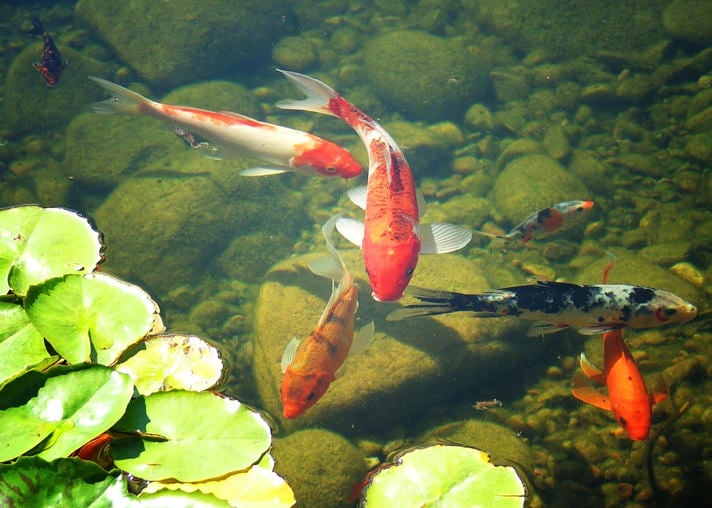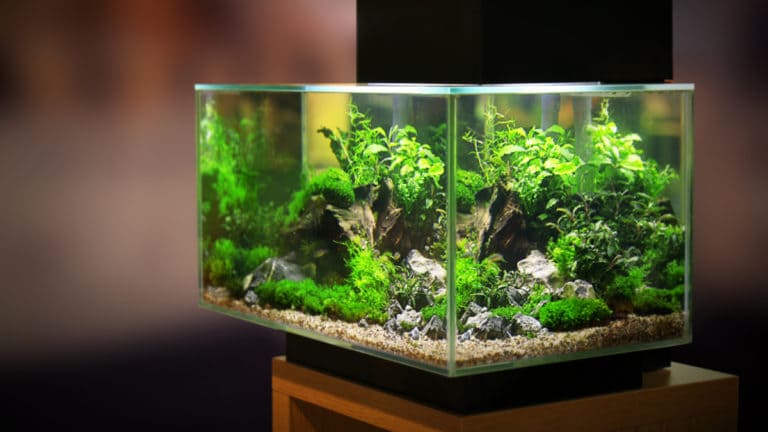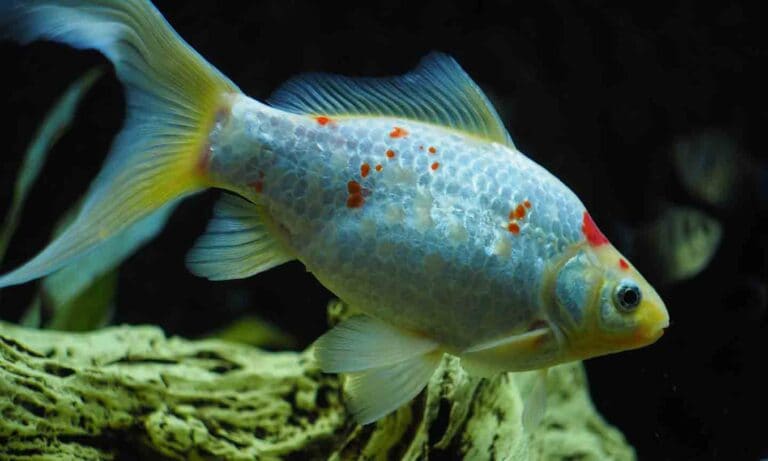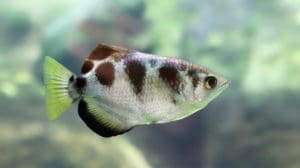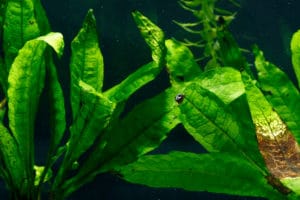Q.
I have seen many articles about raising koi in ponds, but I have never seen anything about raising them in ordinary fish tanks. I have six koi, each several inches long, and they currently reside in a 125-gallon tank. The tank has an external canister filter and an undergravel filter. How long is it safe to keep koi under these conditions? Would it be possible to keep them outdoors in a pond but bring them indoors and keep them in the aquarium tank for viewing for several months?
Q.
We live in New Hampshire and built a small garden pond this past summer and stocked it with several small koi. Now that winter is fast approaching, I am getting worried about leaving the fish outdoors. The pond is only about 20 inches deep, so I assume that during most winters the pond will freeze solid right to the bottom. Our only option is to bring the fish indoors. My question is: can we keep the koi indoors in an aquarium for the winter?
Q.
I really enjoy ponds, but, unfortunately, many people, such as myself, do not live in houses with large yards, making an outdoor pond simply out of the question. It seems to me that townhouse and apartment people could enjoy pond fish, such as koi and large goldfish, in indoor ponds. What are the possibilities for building small indoor ponds?
A.
It certainly is possible to keep koi in standard aquariums — albeit fairly large tanks by hobbyist standards — as suggested in the first question. In Hong Kong and Singapore, for example, apartment dwellers routinely raise koi in large aquarium tanks. The cold winters here in New England force me to move my koi into basement holding tanks every winter — November through April. The idea of operating an indoor pond year round is very intriguing — and something I can identify with because I also have a 300-gallon indoor “pond” in my sunroom.
Each of these questions has a common theme: the possibilities and problems of raising koi in an indoor aquarium-type environment. As you might guess, success in raising koi in aquariums, over-wintering pond fish in indoor holding tanks or operating a small indoor pond depends primarily on keeping the fish load low enough and on maintaining suitable water quality conditions.
Let’s begin with fish load considerations. As faithful readers of this column know, I am obsessed with the problem of overstocked tanks and ponds. Most common fish health and aquarium/pond maintenance problems can be traced to the unfortunate habit of keeping too many fish in too little water. Consequently, during the past several years I have devised a rule of thumb for determining the maximum koi fish load for a given volume of water (aquarium or pond). It is based on evidence gathered to date that relates the frequency and severity of pond fish health problems to the fish load. Of course, you can always keep fewer koi. Keep in mind that the fish loads suggested below assume that the tank, like any properly maintained aquarium, has adequate aeration and mechanical, chemical and biological filtration.
To determine what, in my opinion, is the maximum safe fish load for your tank or indoor pond, divide the total gallonage by 100. The result is the number of 12-inch koi that can be raised in that volume of water. For example, if you are using a 125-gallon tank, then the safe fish load would be 1.25 12-inch koi. In other words, one 12-inch fish would be fine, but two would be overcrowding.
Of course, few folks want to keep just one 12-inch koi, so the table to the right shows the equivalence relationship for other size koi. The table shows, for example, that nine 6-inch koi represent approximately the same load as one 12-inch koi. You can easily determine the number of fish of a given size that you can keep in your tank by following procedure:
- Divide the tank gallonage by 100. This is the fish load limit (measured in the number of 12-inch koi).
- Look up in the table the approximate size fish you plan to keep and note the corresponding number of koi at that size.
- Multiply the fish load limit (from step 1) by the number of koi (step 2).
This is the approximate number of fish of a given size you can keep safely in the tank. So, if our 125-gallon tank will hold 1.25 12-inch koi, then it will hold 11 6-inch koi (1.25 X 9 = 11).
It is essential to realize that as the koi grow, you will have to remove fish from the tank to maintain the proper load balance. For example, you might have 36 4-inch koi in a 100-gallon tank today, but if they are cared for properly, they will each reach 6 inches within 18 to 24 months. At that point, however, the tank is four-times overloaded! In other words, 27 fish will have to go.
If you adhere to the fish load recommendations I have presented, keeping koi in standard aquariums is no different than keeping tropical fish or goldfish. Good aeration using a high-capacity pump is crucial in indoor tanks and ponds because of the relatively poor air movement in closed spaces. The tank should always have a dissolved oxygen level of 7 parts per million or more.
The filter requirements for a well-managed freshwater setup are fairly simple. A good external power filter — either the overflow or canister design — is very important. Efficient mechanical filtration is an absolute necessity. Koi, in particular, produce a lot of solid waste (because they eat so much), and because they also tend to nose around the tank bottom, failure to install an external mechanical filter will doom you to a permanently cloudy tank.
I strongly urge you to use good-quality granular activated carbon in the filter to remove dissolved organic substances from the water. Although this kind of chemical filtration is usually impractical outdoors, it is an essential element in maintaining stable water conditions indoors.
Of course, biological filtration is absolutely necessary. A undergravel filter can handle the job without difficulty, but it should be cleaned weekly with a gravel “vacuum.” Alternatively, you might consider setting up an external biological filter using a separate, smaller fish tank to hold the biological media.
Be aware that koi are jumpers. You must keep some kind of netting over the tank top or I guarantee you will find dried fish lying around the living room floor.
Designing, building and operating an indoor pond is a simple project. An indoor pond can be designed to fit into almost any space in an apartment or house. Using a custom-fitted liner and good-quality building materials (including an attractive wood or brick facing), you can have an indoor pond of several hundred gallons for less than $200. An excellent filtration system for an indoor pond can be made out from standard materials found in any hardware store and will add about $30 to the project, excluding the pump.
Posted By: Chewy Editorial
Featured Image: Via Flickr/Sarah Beth
Share:
